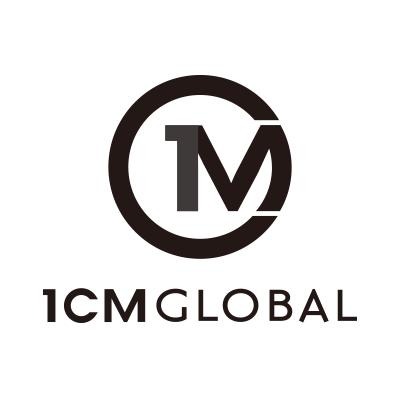| 일 | 월 | 화 | 수 | 목 | 금 | 토 |
|---|---|---|---|---|---|---|
| 1 | 2 | 3 | 4 | 5 | 6 | |
| 7 | 8 | 9 | 10 | 11 | 12 | 13 |
| 14 | 15 | 16 | 17 | 18 | 19 | 20 |
| 21 | 22 | 23 | 24 | 25 | 26 | 27 |
| 28 | 29 | 30 |
- 화장품용기도매
- 파우치제작
- 뱃지대량
- OEM제작
- 카카오프렌즈
- 화장품용기수입
- 금속뱃지
- 중국oem
- 굿즈주문제작
- 뱃지주문제작
- 굿즈맞춤제작
- 원씨엠글로벌
- 파우치주문제작
- 중국제작
- 굿즈제작
- vip증정
- 캐릭터상품개발
- 회사뱃지
- 파우치대량생산
- 뱃지제작
- 뺏지
- 캐릭터뱃지
- OEM
- 파우치샘플
- 콘캔디통
- 뱃지
- 판촉물제작
- 용기도매
- 중국소싱
- 주문제작뱃지
- Today
- Total
보니의 글로벌 (Bonnie's Global)
Exploring the Versatility and Advantages of Material Extrusion (ME) 3D Printing Methods: FDM, FFF, PJP 본문
Exploring the Versatility and Advantages of Material Extrusion (ME) 3D Printing Methods: FDM, FFF, PJP
뽀니 (Pony) 2023. 4. 14. 11:31Learn about Material Extrusion (ME) Methods: FDM, FFF, PJP
Material Extrusion (ME) is a method of creating a shape by melting and spraying a solid material with a high-temperature nozzle. The Fused Deposition Modeling (FDM), Fused Filament Fabrication (FFF), and Plastic Jet Printing (PJP) methods are the most popular 3D printing technologies that utilize this ME method.
ME is widely used as a personal 3D printer because of its low cost and convenience. It is used to create a prototype that accurately reflects the design drawing, allowing the product's shape, design, function, and productivity to be evaluated in advance. This method is essential for research purposes, mass production, productivity review, market research, exhibition entry, and patent registration for new product development.

The production process for a prototype requires careful planning and market research to ensure a successful and efficient mass production process. The method involves melting a solid filament in a high-temperature heating core and extruding it through a nozzle onto a bed where it is stacked layer by layer to create a shape.
There are various types of mock-ups, including soft mock-ups, design mock-ups, and working mock-ups (also called prototype mock-ups). These are classified according to their intended use and whether they are designed to evaluate the product's exterior design or to create a comprehensive product with functional parts.
The ME method is known for its simplicity and low cost, making it an accessible 3D printing technology. However, it requires support to prevent collapse and can take a long time to print, depending on the thickness of the layers. The equipment can leave a laminated pattern on the surface, requiring separate post-processing. Nevertheless, ME has many advantages, including low cost, strong resistance to strength and humidity, and eco-friendliness with less industrial waste.

FDM and FFF are the most commonly used ME methods, and their advantage is the diversity of materials that can be used. PLA, ABS, PC, PC-ABS, Nylon, PEI, Flexible, WOOD, PVA, and HIPS are some of the materials that can be used with these methods. Each material has its advantages and disadvantages, so it is essential to choose the right material for the desired outcome.
In conclusion, the ME method is an important part of product development and is used to evaluate the design, shape, function, and productivity of a product before it is mass-produced. ME is widely used as a personal 3D printer because of its low cost and convenience. ME is known for its simplicity and low cost, but it requires support to prevent collapse and can take a long time to print. The advantage of the ME method is the diversity of materials that can be used with FDM and FFF methods.
ME is also known as material extrusion, and it is a type of additive manufacturing technology that uses a heated nozzle to extrude a melted material layer by layer to create a 3D object.

ME is one of the most widely used 3D printing technologies due to its low cost, accessibility, and ability to use a variety of materials.
FDM and FFF are essentially the same technology, with FFF being a term used by RepRap to avoid infringing on Stratasys' FDM trademark. Both methods use a filament of thermoplastic material that is melted and extruded through a nozzle to create a 3D object layer by layer.
PJP is a similar technology to FDM and FFF, but it uses liquid resin instead of a filament.

ME is a popular choice for rapid prototyping, as it allows for quick and cost-effective production of functional prototypes.
In addition to the materials listed in the previous translation, there are many other materials that can be used with ME, including PETG, TPU, carbon fiber, and metal-filled filaments.
ME has some limitations, including the need for support structures for overhanging features, the relatively low resolution compared to other 3D printing technologies, and the tendency to produce visible layer lines on the surface of printed objects.
Despite these limitations, ME remains a popular and versatile 3D printing technology that is widely used in a variety of industries, from aerospace and automotive to consumer products and healthcare.

'3D Printing Canada' 카테고리의 다른 글
| About the use of 3D printing in the field of architecture - Get3DPrintQuote (0) | 2023.04.13 |
|---|

